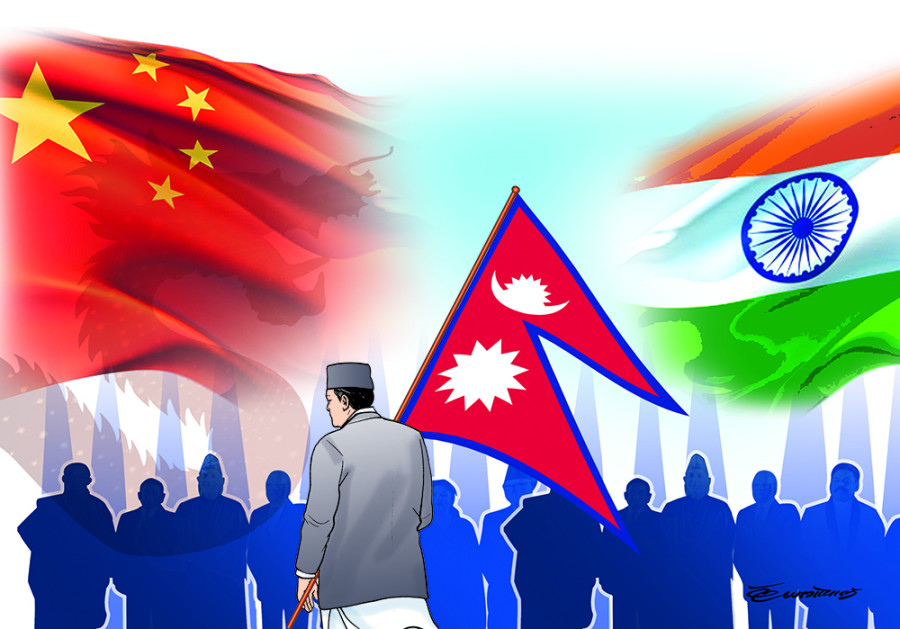Columns
The dragon, the elephant and the yam
Sustained economic expansion and upturn is not national but regional in nature.
Chaitanya Mishra
This is not the first meeting of the dragon, the elephant and the yam. The three have had at least two highly intense meetings during the last two and a half millennia. The singular lesson of the two meetings is that sustained economic expansion and upturn is not national but regional in nature.
One of the early meetings of the trio—or versions of them—took place during 600 BCE to 200 CE, a span of 800 years. This was a period of great prosperity in the region as a whole. This was the time when the Maurya and Gupta empires flourished in India. In China, this was the periods of Spring and Autumn and the Warring States as well as of the Han and Ching dynasties. Agricultural as well as industrial production and trade were expanding rapidly. New trade routes, including sections of the Silk Road, were developed. This was also a period of much strife and the making and unmaking of states.
The second dense meeting of the trio took place during CE 1100-1600, just prior to the dominance of Britain and Europe across the globe. The gross domestic products of China and India have been shown to account for as much as 55 percent of the world gross domestic product (GDP) at the close of this period. The Malla period in the Kathmandu Valley, adjacent areas and along the border trade points were well developed. The three cities of the Kathmandu Valley had developed excellent infrastructure and excelled in Buddhist, Hindu and other learning as well as artisanship, crafts and engineering.
The achievement and the glory of the Maratha, Mughal and other empires testify to the economic and cultural growth of India during this period. Similarly, the great economic expansion and consolidation of the Song and Ming empires speak of extraordinary achievements in China. The dragon, the elephant and possibly the yam now seem to be entering the third Asian age. The yam has been slow to grow. We shall see how it catches up with its neighbours.
Catching up
Catching up with the neighbours in this third Asian age implies, first of all, that all three countries take enhanced initiatives toward connecting, linking and riding the waves mutually and ceaselessly generated. As far as Nepal is concerned, expanding and intensifying connectivity with China must be regarded as the single most important initiative for years to come. While connectivity with India is even more important, several Nepal-India connectivity channels are in use at present. Nepal must keep all international doors open. Shuttering the door up north is surely unwise.
Nepal's enhanced connectivity initiative must go in lockstep with two other policy choices. One, Nepal must fully open up to investment, both domestic and international. Legal and bureaucratic hurdles must immediately be eased and erased. Infrastructural facilities can then gradually be developed in order to attract further investment. Nepal having one of the most inexpensive wage bills will certainly remain attractive to investors for several years to come.
Two, the engine of connectivity, production and exchange can be driven only in consort with democratic and inclusive governance and sustained human capacity building. These elements are enshrined in the constitution, but they remain to be implemented with any seriousness. A review and overhauling of the system of governance is in order, as is a reimagining of the educational system, including a radical de-linking of political parties from educational institutions.
Northern and southern doors
There is only an exceedingly small chance that both northern and southern doors will close at the same time. Nepal will have an outlet almost no matter what. Two sets of doors are better from the export-import and economic angle. The present world order is labelled an exchangist order—that exchange is paramount and that you are able to produce what you can sell at a profit. No country has been able to survive and prosper without selling and buying goods, services, bodies, ideas, skills, history and whatnot. Having alternative doorways is also way better for Nepal from political, cultural and strategic angles.
In essence, Nepal’s survival and growth, like that of others, requires cooperation from a great many countries, most of all its neighbours. India and China require cooperation as well, including from Nepal. In order for China and India to receive cooperation from Nepal, the latter must not only be able to provide help but also provide the kind of help the former call for. To the extent that Nepal is economically backward and politically highly volatile, it will not be able to help its neighbours—economically, politically or strategically.
Similarly, if Nepal becomes a regional or global centre for money laundering, trade in drugs or arms, or a haven for global security agencies, terrorists or even infectious diseases, it would be directly harmful to peace and growth in China and India. Growth and stability in Nepal, as such, must be given high importance by both China and India.
A geographical shift of the world capitalist core will entail a host of political, economic and cultural uncertainty, turmoil, competition and conflict. Nepal has decided to be a member of the Belt and Road Initiative (BRI). It also makes sense to go ahead with the Millennium Challenge Corporation (MCC) initiative. There are those who seek to tie up MCC with potential security obligations. There appears to be no such hook there.
There are also those who seek to wean Nepal off the Belt and Road on a variety of grounds. There is the warning that the BRI will almost inevitably lead to a debt trap. This, for one, need not be the case. For another, this would be true with all loans regardless of their source. Therefore, while Nepal must take serious care to invest international funds, in particular, productively, the charge of a 'BRI debt trap' may also be politically motivated. As they say, it is wise to listen, but it is wiser to decide based on one’s longer-term interest.
***
What do you think?
Dear reader, we’d like to hear from you. We regularly publish letters to the editor on contemporary issues or direct responses to something the Post has recently published. Please send your letters to [email protected] with "Letter to the Editor" in the subject line. Please include your name, location, and a contact address so one of our editors can reach out to you.




 8.12°C Kathmandu
8.12°C Kathmandu













%20(1).jpg&w=300&height=200)

